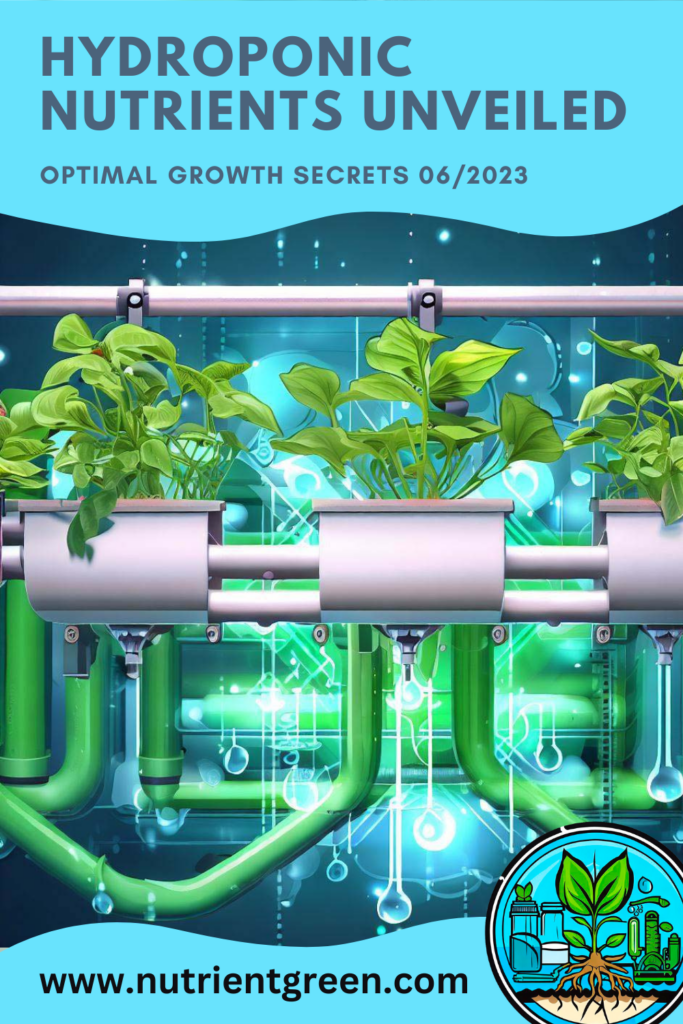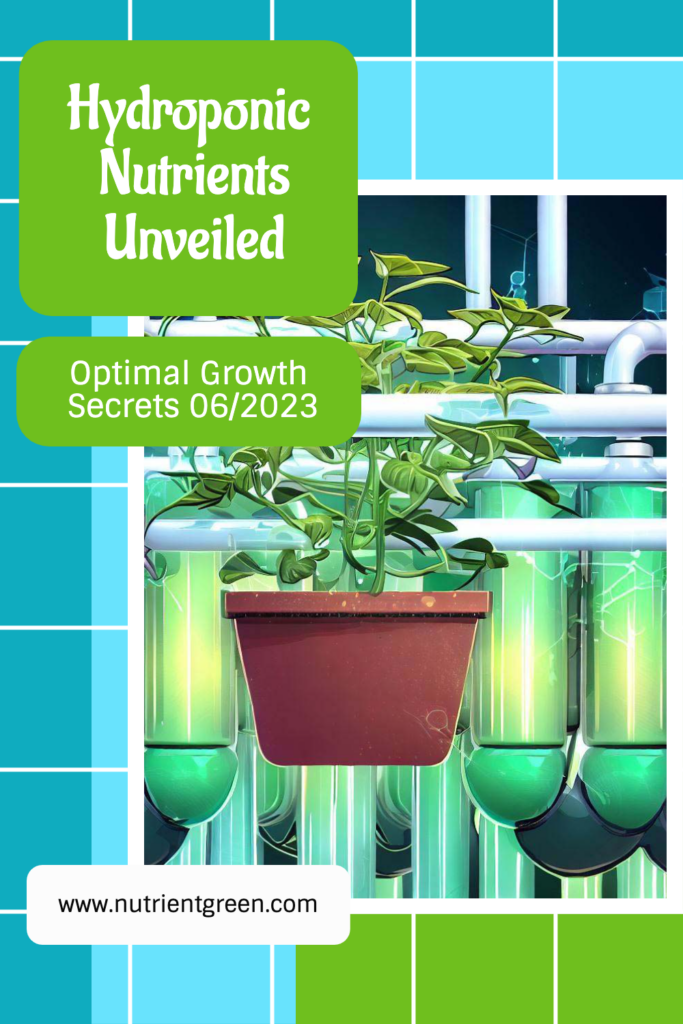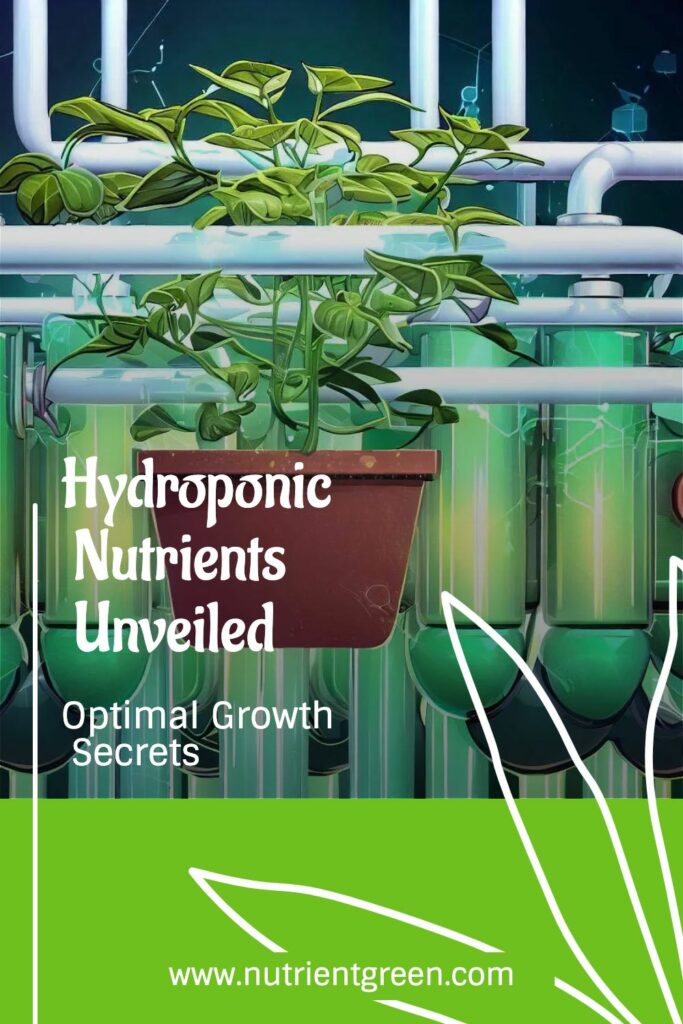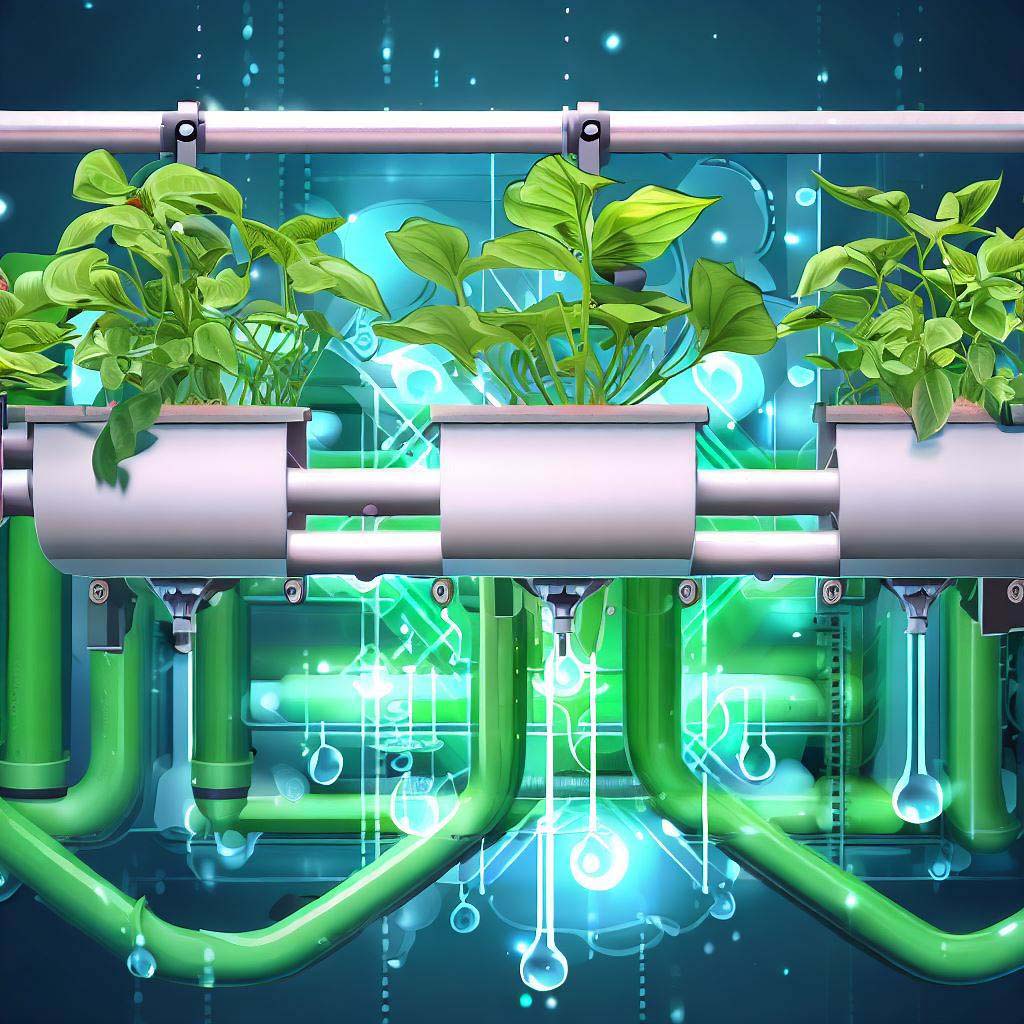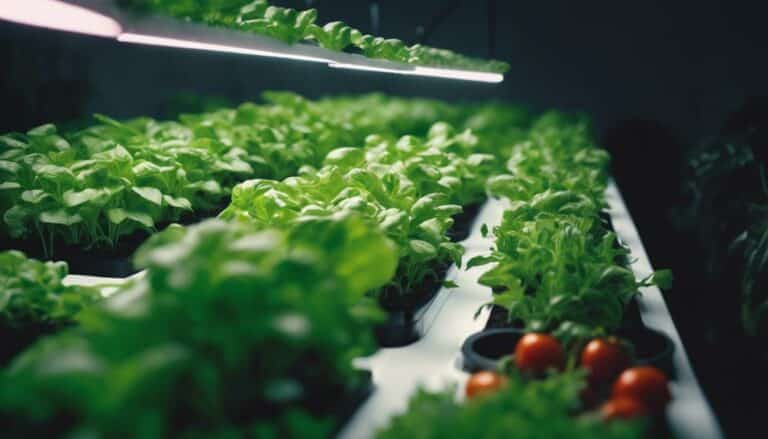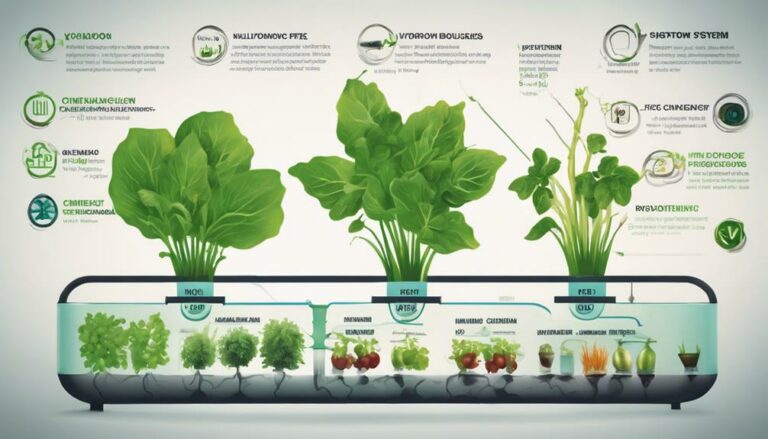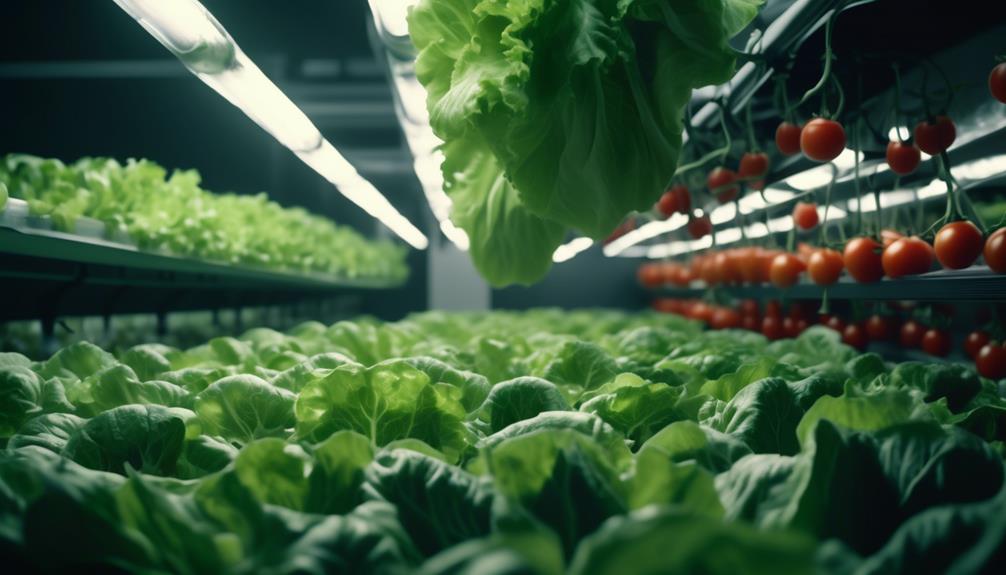Have you ever wondered how plants can grow without soil? If you have, you might have heard of hydroponics, a type of horticulture that involves growing plants in water-based nutrient solutions. Hydroponics is a modern and sustainable way of growing plants, as it offers many benefits such as saving water, space, time, and money. Hydroponics also allows you to grow plants year-round, regardless of the weather or climate.
Table of Contents
Introduction
However, hydroponics also comes with some challenges and requirements. One of the most important aspects of hydroponics is providing your plants with adequate and balanced nutrients. Unlike soil-grown plants, hydroponic plants rely entirely on the nutrient solution for their growth and development. Therefore, you need to know what hydroponic nutrients are, how they work, and how to use them properly.
In this article, we will explain everything you need to know about hydroponic nutrients, including their types, functions, factors, methods, tips, and more. By the end of this article, you will be able to grow healthy and productive plants in your hydroponic system using the right nutrients.
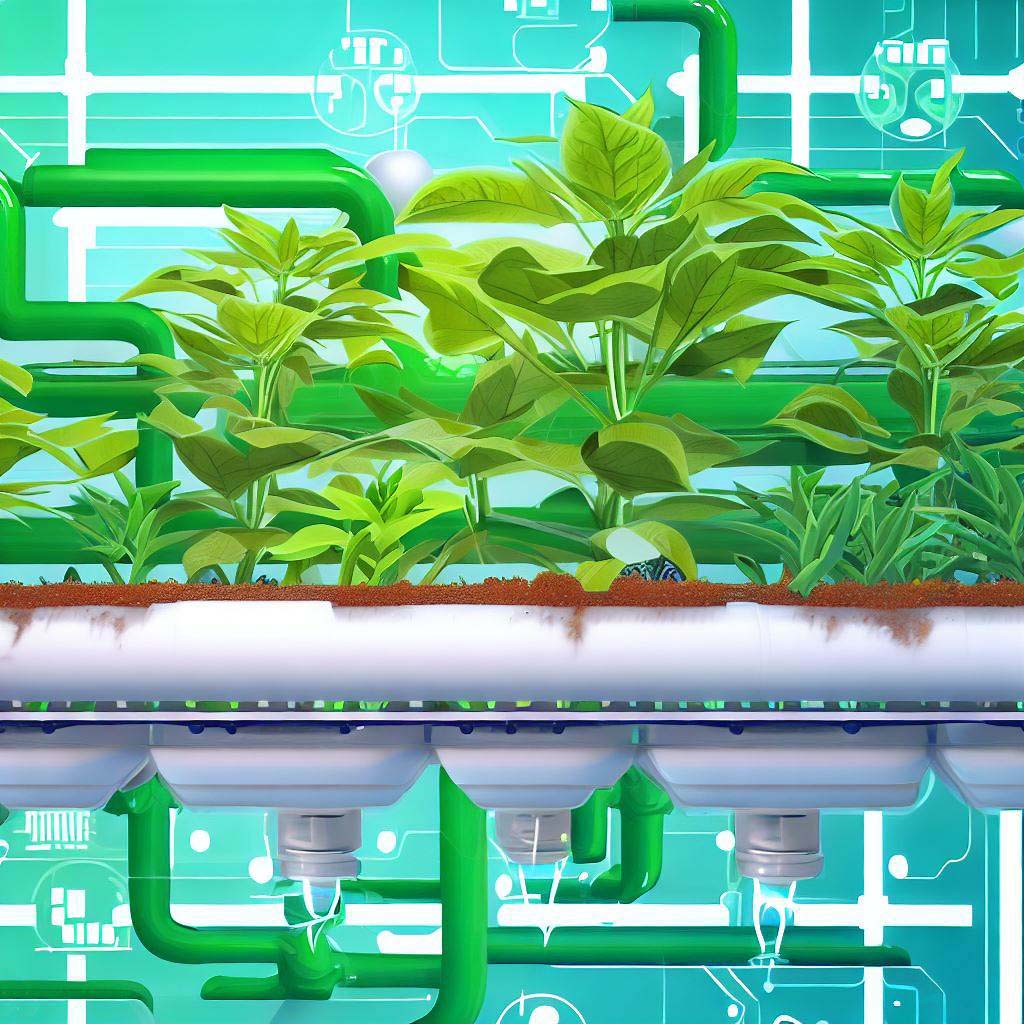
The Basics of Hydroponic Nutrients
Hydroponic nutrients are chemical or organic substances that provide essential elements for plant growth. Plants need various elements for different processes such as photosynthesis, respiration, transpiration, metabolism, reproduction, and more. Some elements are required in large amounts (macronutrients), while others are required in small amounts (micronutrients).
The main macronutrients for plants are nitrogen (N), phosphorus (P), potassium (K), calcium (Ca), magnesium (Mg), and sulfur (S). These elements are involved in various functions such as building proteins, nucleic acids, carbohydrates, lipids, enzymes, hormones, chlorophyll, cell walls, and more.
The main micronutrients for plants are iron (Fe), manganese (Mn), zinc (Zn), copper (Cu), boron (B), molybdenum (Mo), chlorine (Cl), nickel (Ni), cobalt (Co), sodium (Na), silicon (Si), selenium (Se), and vanadium (V). These elements are involved in various functions such as activating enzymes, transporting electrons, regulating osmosis, enhancing stress tolerance, and more.
Hydroponic nutrients can be classified into two categories: organic and synthetic. Organic nutrients are derived from natural sources such as animal manure, compost, seaweed, fish emulsion, worm castings, and more. Synthetic nutrients are manufactured from chemical compounds such as ammonium nitrate, potassium phosphate, magnesium sulfate, and more.
Organic nutrients have some advantages over synthetic nutrients, such as being more environmentally friendly, enhancing soil quality, improving plant health and flavor, and reducing pest and disease problems. However, organic nutrients also have some disadvantages, such as being more expensive, less available, less soluble, less stable, less consistent, and more prone to contamination.
Find here an interesting scientific article about Nutrients Recycling in Hydroponics
Synthetic nutrients have some advantages over organic nutrients, such as being cheaper, more available, more soluble, more stable, more consistent, and more precise. However, synthetic nutrients also have some disadvantages, such as being less environmentally friendly, degrading soil quality, affecting plant health and flavor, and increasing pest and disease problems.
The Factors that Affect Hydroponic Nutrients
Hydroponic nutrients are not only affected by their type and composition but also by various external factors that influence their availability and uptake by plants. Some of the most important factors are pH, EC (electrical conductivity), temperature, oxygen, and light.
pH represents the acidity or alkalinity of a solution, with a scale ranging from 0 to 14 and 7 as the neutral point. It plays a crucial role in the solubility and availability of nutrients. Each nutrient has its own optimal pH range for absorption by plants. In hydroponics, most plants thrive within a slightly acidic pH range of 5.5 to 6.5. Deviating from this range can result in nutrient unavailability or toxicity.
EC indicates the concentration or strength of a solution, reflecting the presence of dissolved salts or ions. It directly impacts the osmotic pressure and water uptake of plants. Different plants have specific EC requirements for their growth and development. Generally, a moderate EC range of 1.0 to 2.0 mS/cm is favored in hydroponics. Extreme EC levels can lead to nutrient deficiencies or toxicities, affecting the overall health of plants.
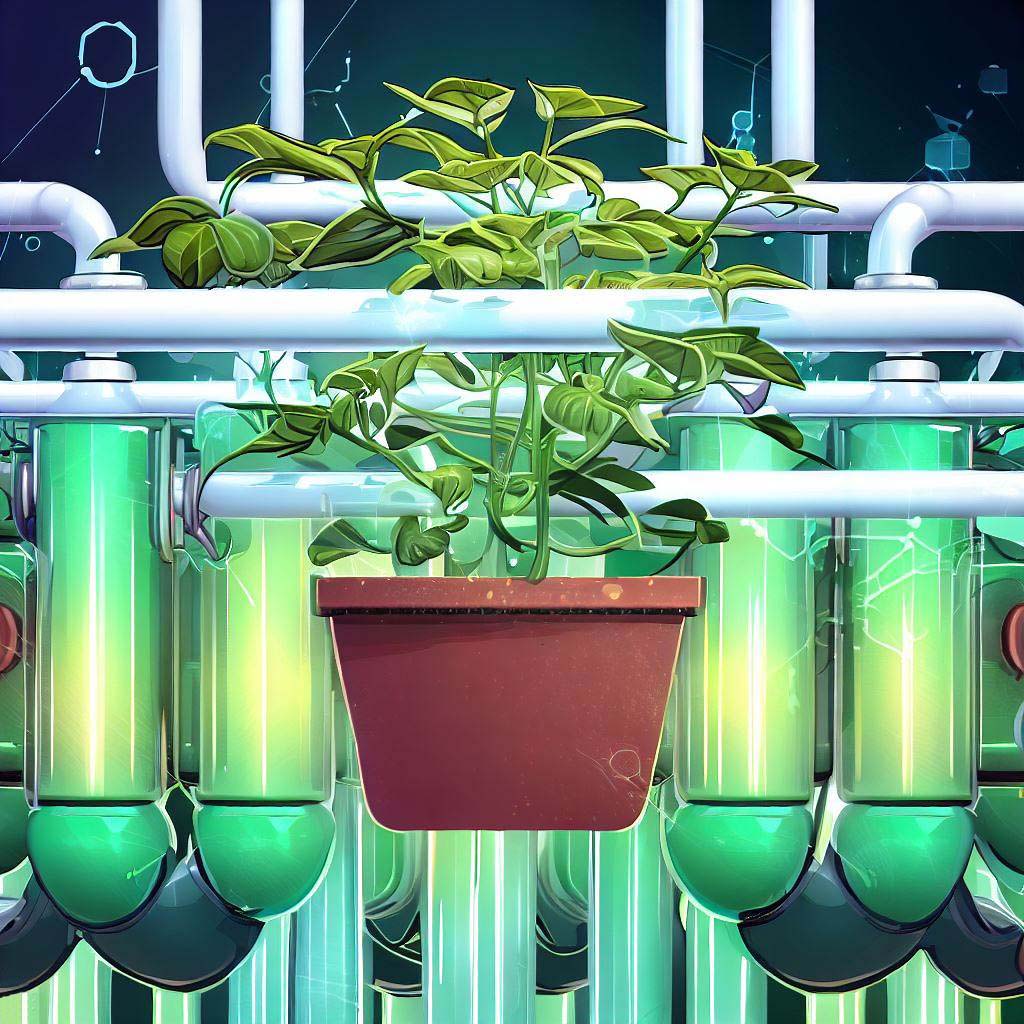
Temperature measures the heat or coldness of a solution and influences nutrient solubility and mobility. Optimal temperature ranges vary for different nutrients, affecting their dissolution and transportation within the solution. In hydroponics, most plants thrive within a moderate temperature range of 18 to 24°C (64 to 75°F). Temperature extremes can negatively impact nutrient availability and stability, compromising plant health.
Oxygen is vital for the respiration and metabolism of plants and microorganisms. It plays a crucial role in oxygenation and aeration within the solution. Plants have specific oxygen requirements for optimal growth and development. In hydroponics, maintaining a high oxygen level of 8 to 10 ppm (parts per million) is generally preferred. Insufficient oxygen levels can lead to root rot or suffocation, hampering plant health.
Light, as electromagnetic radiation, provides energy and information necessary for photosynthesis and photomorphogenesis in plants. It influences the spectrum and intensity of the light source. Different plants have distinct light requirements for their growth and development. In hydroponics, a full spectrum light source with a high intensity of 400 to 800 µmol/m2/s is typically ideal. Inadequate or excessive light conditions can result in issues such as etiolation or photoinhibition, negatively affecting plant growth.
The Methods of Delivering Hydroponic Nutrients
Hydroponic nutrients can be delivered to plants in different ways depending on the type and design of the hydroponic system. Some of the most common methods are:
- Passive method: This method involves using a wick or a capillary mat to transfer the nutrient solution from a reservoir to the plant roots by capillary action. This method is simple, cheap, and easy to maintain, but it has limited control over the nutrient delivery and may cause salt accumulation or nutrient imbalance.
- Active method: This method involves using a pump or a timer to deliver the nutrient solution from a reservoir to the plant roots by pressure or gravity. This method can be further divided into two types: recirculating and non-recirculating.
- Recirculating method: This method involves reusing the nutrient solution after it passes through the plant roots by returning it to the reservoir. This method is efficient, economical, and environmentally friendly, but it requires constant monitoring and adjustment of the pH, EC, temperature, and oxygen level of the solution.
- Non-recirculating method: This method involves discarding the nutrient solution after it passes through the plant roots by draining it away. This method is simple, easy, and precise, but it wastes water and nutrients and may cause environmental pollution.
Some examples of hydroponic systems that use different methods of delivering nutrients are:
- Wick system: A passive system that uses a wick to transfer the nutrient solution from a reservoir to a growing medium where the plant roots are located.
- Deep water culture (DWC) system: An active recirculating system that uses an air pump to aerate and circulate the nutrient solution in a reservoir where the plant roots are suspended.
- Nutrient film technique (NFT) system: An active recirculating system that uses a pump to deliver a thin film of nutrient solution along a channel where the plant roots are exposed.
- Ebb and flow (flood and drain) system: An active non-recirculating system that uses a pump and a timer to periodically flood and drain a tray where the plant roots are located in a growing medium.
- Drip system: An active non-recirculating system that uses a pump and a timer to periodically drip nutrient solution onto each plant root in a growing medium.
The Tips for Using Hydroponic Nutrients
Using hydroponic nutrients can be tricky and challenging, especially for beginners. Here are some tips and advice on how to use hydroponic nutrients effectively and efficiently:
- Choose the right type and quality of nutrients for your plants and system. Read the labels carefully and follow the instructions accordingly. Avoid using cheap or low-quality nutrients that may contain harmful substances or impurities.
- Mix and prepare your nutrient solution properly. Use clean water with low chlorine content and adjust its pH to around 6.0 before adding nutrients. Dissolve each nutrient separately in water before mixing them together. Avoid using metal containers or utensils that may react with nutrients.
- Measure and monitor your nutrient solution regularly. Use reliable instruments such as pH meters, EC meters, thermometers, oxygen meters, etc. to check your nutrient solution’s pH, EC, temperature, oxygen level, etc. Record your readings and make adjustments as needed.
- Change your nutrient solution periodically. Depending on your system and method, you may need to change your nutrient solution every one to two weeks or more often. This will prevent nutrient depletion or accumulation, salt buildup, pH drift, microbial growth, etc.
- Clean and sanitize your system and equipment regularly. Depending on your system and method, you may need to clean and sanitize your system and equipment every time you change your nutrient solution or more often. This will prevent clogging, corrosion, contamination, infection, etc.
Conclusion
Hydroponic nutrients are essential for growing healthy and productive plants in hydroponic systems. However, using hydroponic nutrients can be complicated and challenging. You need to understand what hydroponic nutrients are, how they work, and how to use them properly. You also need to consider various factors that affect hydroponic nutrients, such as pH, EC, temperature, oxygen, and light. You also need to choose the best method of delivering hydroponic nutrients to your plants, such as passive, active, recirculating, or non-recirculating. You also need to follow some tips and advice on how to use hydroponic nutrients effectively and efficiently, such as choosing the right type and quality of nutrients, mixing and preparing your nutrient solution properly, measuring and monitoring your nutrient solution regularly, changing your nutrient solution periodically, and cleaning and sanitizing your system and equipment regularly.
We hope this article has helped you learn more about hydroponic nutrients and how to use them. If you have any questions or comments, please feel free to share them below. Happy hydroponics!
FAQs
What is the best brand of hydroponic nutrients?
There is no definitive answer to this question, as different brands of hydroponic nutrients may have different features, benefits, drawbacks, prices, etc. Some of the most popular and reputable brands of hydroponic nutrients are General Hydroponics, Advanced Nutrients, Fox Farm, Botanicare, etc. You may need to do some research and comparison before choosing the best brand of hydroponic nutrients for your plants and system.
How much hydroponic nutrients do I need to use?
The amount of hydroponic nutrients you need to use depends on various factors such as the type and size of your plants, the type and design of your system, the method of delivering nutrients, the quality and concentration of nutrients, etc. Generally speaking, you should follow the manufacturer’s recommendations on the label of your nutrient product. You should also measure the EC of your nutrient solution to ensure that it is within the optimal range for your plants.
How often do I need to change my hydroponic nutrient solution?
The frequency of changing your hydroponic nutrient solution depends on various factors such as the type and design of your system, the method of delivering nutrients, the quality and concentration of nutrients, the environmental conditions, etc. Generally speaking, you should change your hydroponic nutrient solution every one to two weeks or more often if needed. You should also monitor your nutrient solution’s pH, EC, temperature, oxygen level, etc. and make adjustments as needed.
How do I store my hydroponic nutrients?
You should store your hydroponic nutrients in a cool, dark, and dry place away from direct sunlight, heat sources, moisture, and children or pets. You should also keep your nutrient containers tightly closed and avoid contamination or spillage. You should also check the expiration date of your nutrient products and discard them if they are past their shelf life.
Can I use tap water for my hydroponic nutrient solution?
You can use tap water for your hydroponic nutrient solution if it is clean and safe for drinking. However, you should be aware that tap water may contain chlorine, chloramine, fluoride, minerals, metals, or other substances that may affect the quality and pH of your nutrient solution. You may need to filter or treat your tap water before using it for your hydroponic nutrient solution. You may also need to adjust the pH and EC of your nutrient solution after adding tap water. Alternatively, you can use distilled water, reverse osmosis water, rainwater, or spring water for your hydroponic nutrient solution. These types of water are usually pure and free of contaminants or additives. However, you may need to add some calcium and magnesium supplements to these types of water to prevent nutrient deficiencies in your plants.
